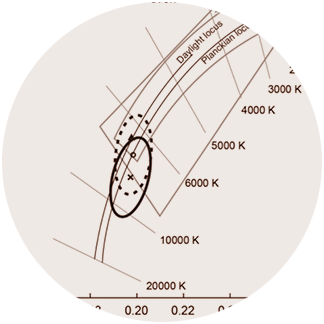Collaborating with Samsung Electronics, Color lab has investigated the optimal white observers consider as the true white when viewing TV displays. The research question was raised in the Master dissertation of Dr.Kyungah Choi(supervisor: Prof.Suk), and Dr.Choi began with smartphones and tablet PCs. Expanding the research scope, Dr.Choi has led the empirical study to confirm whether the previous finding should be eligible for the larger TV displays. In particular, the paper not only reports the empirical results but also proposes an algorithm for the practical application in TV industry.
Abstract
This study proposes the optimal white point settings of consumer televisions observed under different viewing conditions. The ratings from visual experiments were modeled with a bivariate Gaussian distribution to predict the optimal white points. Under dark surround conditions, where there is no effect of lighting chromaticity, the averaged optimal white point was located at a correlated color temperature of 7346 K and a Duv of -0.0015. The optimal white point was shifted toward a higher color temperature compared to the current standards. The results also indicated that current white point settings of major television manufacturers are too bluish. Neither televisions that meet the current standards nor televisions in the market would appear as true white under the viewing conditions employed in this study. Moreover, the optimal white point depended largely on viewing conditions. Image content and ambient lighting conditions were observed to be essential factors that influence the perception of the white point. The research, therefore, proposed to automatically change the white point of the display based on the image content and the real-time measurements of the surrounding ambient light falling on the screen. Ultimately, this study might be of interest to the industry as a basis for future deliberations on target white points for consumer televisions designed to provide a better color appearance.


